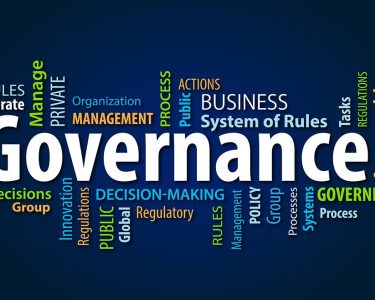In the world of politics and governance, there are a plethora of issues that need to be addressed. From economic policies to international relations, each topic presents unique challenges for policymakers. That’s why we turned to The Policy Platform’s thought leaders who have shared their insights on the different types of governance issues and the pros and cons of various approaches. In this blog post, we’ll dive into these insights to help you gain a better understanding of how best to approach governance issues in today’s world. So buckle up and get ready for some thought-provoking ideas!
The Policy Platform’s Insights on Governance Issues
The Policy Platform is a leading platform that focuses on providing insights and solutions to governance issues. According to their thought leaders, there are different types of governance issues that need to be addressed depending on the situation.
One of the most common governance challenges is public trust. The lack of trust in government can lead to apathy among citizens and a disregard for laws and regulations. To overcome this problem, policymakers need to focus on transparency, accountability, and communication.
Another major challenge facing governments today is economic policy. Economic policies have a significant impact on people’s lives; therefore, they must be carefully crafted with input from experts in economics and finance.
In addition, international relations present unique challenges for governments as well. In an increasingly globalized world where countries are more interconnected than ever before, it’s essential for policymakers to consider how their actions will affect other nations.
The Policy Platform’s insights highlight the importance of taking a comprehensive approach when addressing governance issues. By understanding the different types of challenges faced by governments, policymakers can develop effective solutions that meet the needs of citizens while also promoting good governance practices.
The Different Types of Governance Issues
Governance is a complex and multifaceted concept that involves various issues. Understanding the different types of governance issues is essential in identifying the appropriate approach to addressing them.
One type of governance issue is political governance, which concerns the way governments exercise their power and authority over citizens. It includes issues such as transparency, accountability, and participation in decision-making processes.
Another type of governance issue is economic governance, which relates to how societies manage their resources and economies. It covers topics such as fiscal policies, trade regulations, and financial stability measures.
Social governance issues are also significant as they focus on how societies address social inequalities, human rights abuses and promote inclusion for marginalized communities.
Environmental Governance deals with managing natural resources like land use planning or conservation strategies while ensuring sustainable development goals are met.
All these types of governance issues present unique challenges that require specific approaches tailored to each one’s needs. A holistic approach must be adopted by policymakers when creating solutions to address different types of Governance Issues faced by society today.
Pros and Cons of Different Governance Issue Approaches
When it comes to governance issues, there are several approaches that organizations can take. Each approach has its own set of pros and cons that need to be considered before making a decision.
One approach is the top-down approach where decisions are made by those in power and then implemented throughout the organization. The advantage of this approach is that decisions can be made quickly and efficiently. However, this can also lead to a lack of input from those who will be affected by the decisions.
Another approach is the bottom-up approach where ideas and feedback come from employees at all levels of the organization. This leads to more buy-in from employees but can result in slower decision-making processes.
A third option is collaborative governance where stakeholders work together to make decisions. This allows for multiple perspectives to be considered but may result in compromises that don’t fully satisfy any one group.
There is regulatory governance where external regulations dictate how an organization operates. While this ensures compliance with laws, it may not necessarily align with an organization’s goals or values.
Ultimately, choosing an appropriate governance issue approach depends on various factors such as organizational culture, stakeholder needs, industry standards etc.
What is the best way to approach Governance Issues?
When it comes to approaching governance issues, there is no one-size-fits-all solution. However, there are some key principles that can guide policymakers and stakeholders in addressing these complex challenges.
Firstly, it’s important to recognize the diverse perspectives and needs of different stakeholders. By engaging all relevant parties in the decision-making process, governments can ensure that policies reflect a range of viewpoints and address the concerns of marginalized groups.
Secondly, transparency and accountability are crucial in promoting good governance. This means ensuring that information about policy decisions is readily accessible to citizens, as well as establishing mechanisms for oversight and evaluation.
Thirdly, taking a collaborative approach can help build consensus around solutions to governance issues. By working with civil society organizations, businesses, and other stakeholders who have expertise or resources to contribute, policymakers can create more effective policies that better serve their constituents.
Finally it’s important for government officials at all levels not only listen but also act on public input when creating new laws or regulations. This helps promote trust between citizens & government while also improving accountability across all sectors involved.
Conclusion
Governance issues are complex and multifaceted, requiring a nuanced approach that takes into consideration the unique context of each situation. The Policy Platform’s thought leaders have provided valuable insights on how to navigate these challenges.
From their perspectives, it is essential to identify the specific type of governance issue at hand before choosing an appropriate approach. Whether it is structural, strategic or cultural in nature will determine the best way forward.
Furthermore, there are pros and cons associated with each approach. For example, while top-down approaches may be efficient in implementing change quickly, they run the risk of ignoring grassroots voices and creating resentment among stakeholders.
Ultimately, a collaborative and participatory approach that engages all relevant stakeholders is likely to yield better outcomes for everyone involved. By fostering trust and transparency throughout the process of addressing governance issues, organizations can build stronger relationships with their constituents and create more effective solutions to complex problems.
By taking these insights into account when faced with governance issues in your own organization or community, you can help ensure that decisions are made collaboratively with input from all parties involved. This not only leads to better outcomes but also builds trust between those who govern and those who are governed – something that is crucial for any society striving towards progress and prosperity.




